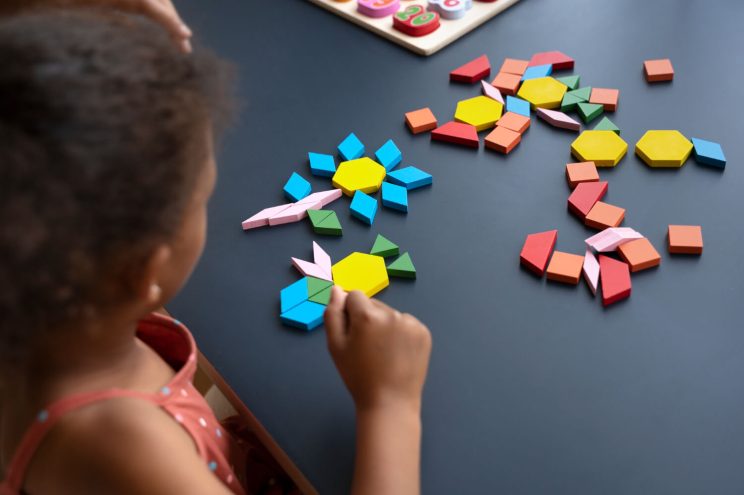Basic Shapes for Kids
reviewed by Jessica Kaminski
Updated on June 17, 2024
Teaching preschoolers is both a challenging and inspirational task. Imagine your joy when the child grasps some knowledge – the feeling is truly incomparable.
When it comes to math, you can teach your kid many topics, and some simple shapes are one of them. Preschoolers are curious, so they’ll eagerly explore the world around them and the shapes it consists of. But where and how do you start? Here’s the guide!
What are shapes for preschoolers?
Preschoolers can easily learn to identify circles, squares, triangles, rectangles, and ovals. Kids commonly learn to identify two- and three-dimensional shapes using improvised means like books, games, blocks, and posters.
Most commonly, you both will have to go through these steps.
1. Teach them to identify shapes
Focus on one shape at a time. Let’s take triangles, for instance. You shouldn’t diversify them at this point – introduce the child to different forms and types. Once they know what a triangle is, ask them to pinpoint the shapes visually whenever they see it indoors or outdoors. Add some reward for that, so your kid will think of this as a game.
2. Introduce new words
Create the shape board with shapes names for kids, and corresponding images. Associate each shape with a color – it’s the most effective way for kids to memorize them.
Unfortunately, even with this color association, sometimes learning shapes for kids can become a real challenge. If that’s the case with your child, you may need professional help from experienced tutors.
Luckily, there are platforms like Brighterly where careful teachers do their best to help kids make friends with math shapes and more.
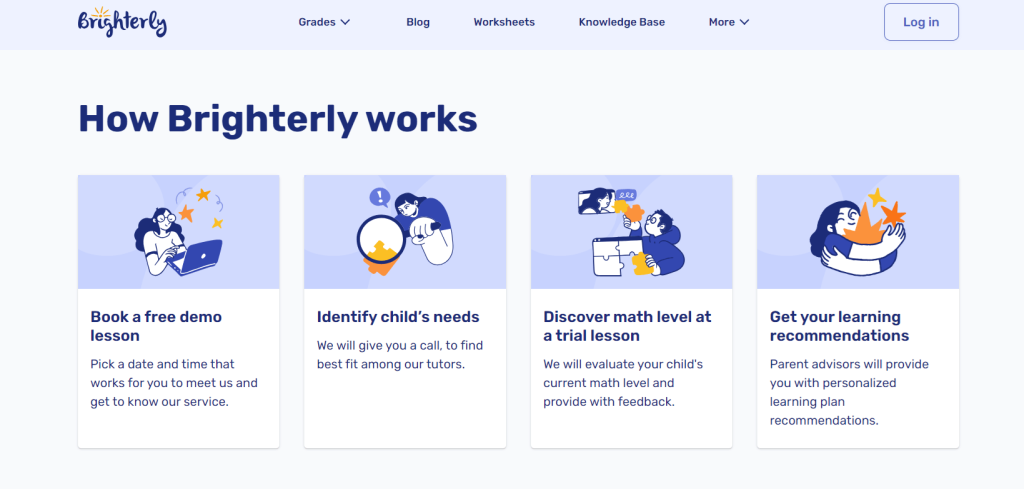
Each preschooler is already an individual, so the tutor must suit their temper. Thus, Brighterly matches you with the best-fitting, most responsive expert to guarantee a perfect match. Hence, teaching basic shapes to your child won’t be an issue with this platform.
3. Compare shapes
After kids learn to find shaped objects, ask them to compare. For instance, you may tell them to find rectangular objects in their room: doors, windows, books, maps, pictures, etc. Now, ask them to compare and say which of these objects are larger or smaller.
4. Explain two- and three-dimensional shapes
Most often, preschoolers train on real-world three-dimensional shapes. However, they should also understand how important basic shapes change in two dimensions.
Let’s take a book and a construction paper, for example. These have the same rectangular shape, but where’s the two-dimensional sample? Ask the kid to distinguish the two types.
How to teach shapes
These are some easy and fun ways how to teach shapes in a playful way:
- Shape of the dinner plate
- Spotting the shape when out and about
- Tracing the shape
- Going on the shape hunt
- Defining the shape of the day
- Matching the shapes
- Making pictures with shapes
- Reading stories of the shapes
Shape of the dinner plate
You can cut usual foods into different shapes for kids and ask your child to define them. For example, you can cut a watermelon into triangles, sandwiches into squares, or apples into circles.
Ask the kid to describe them: are they thin or thick? How many corners do they have? Do they have straight or round sides?
Spotting the shape when out and about
Spotting basic shapes for kids can be a lot of fun! Focus on the shapes the child can find when out and about.
Think about road signs, car wheels, and pavement slabs. What are their shapes? And most importantly, will your child spot them and draw the association?
Tracing the shape
Tracing shapes can help in teaching basic shapes to kids. Pick any shape you like and ask your kid to trace it. They can do it on the sand or soil. Plus, they can use a pan, crayon, or paint to trace it on paper or pavement.
Going on the shape hunt
Ask your child to find as many examples of a specific shape around your house as possible. Or focus on one room. Once they find some shape, ask them to seek a smaller or larger example. It’s the good old hide-and-seek remastered to help kids in learning shapes.
Defining the shape of the day
Ask the kid to pick the shape of the day – it can be whatever they like. Then, during the day, you both should try to find as many examples of that shape as possible. Indoors, outdoors, or even on the TV – everything goes.
Matching the shapes
Cut out different paper shapes of various sizes and colors. The more you cut, the better. Then, ask your child to find all the same shapes and name them. You can even set a specific timeframe for the exercise when your kid is proficient enough.
Making pictures with shapes
Choose one shape from those basic shapes for kids and cut it from paper in different sizes. Ask your child to complete pictures from those shapes. Boats, houses, butterflies, and flowers – let them use their imagination. Then, try the same exercise with a different shape.
Reading stories of the shapes
Pick some books with exciting storylines. Those usually come with astonishing pictures. Read the story out loud and ask your child to define when they hear something about a shape. You don’t need a specialized book for this. Practically any book for kids will do.
Basic shapes for preschool
Some basic shapes for preschool include:
- Circles
- Squares
- Rectangular
- Triangles
- Ovals
- Rhombuses
- Stars
- Arrows
- Hearts
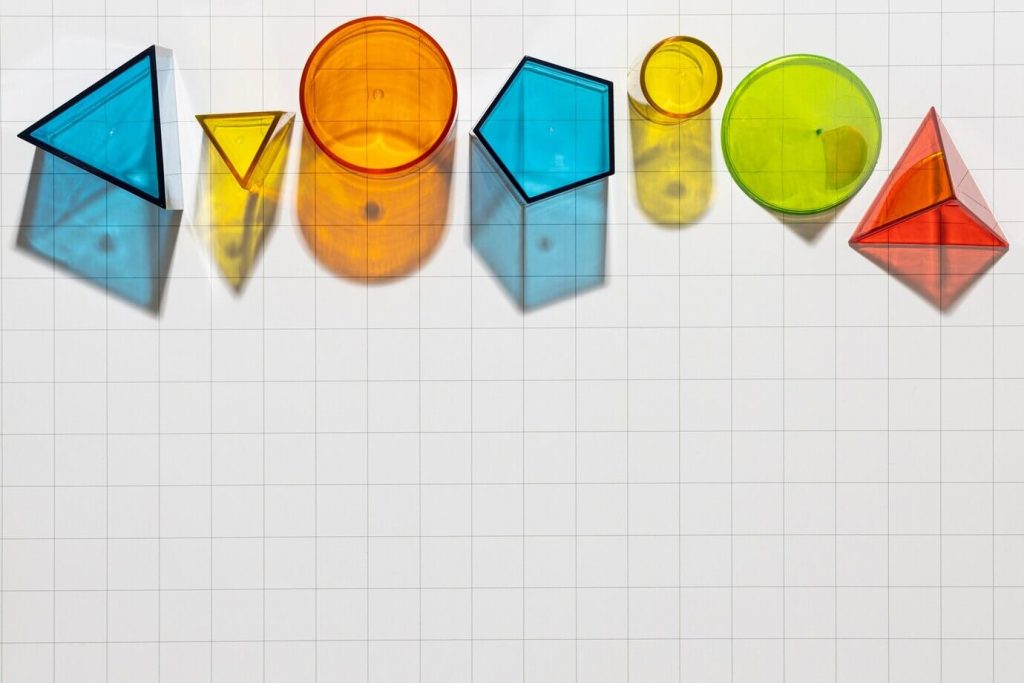
All of the shapes for kids to learn have real-world associations. It’s where you can find them.
| Circle | Wheels, balls, cans, clocks, Moon, pizzas |
| Square | Dice, bread, windows, ice cubes, blackboards |
| Rectangular | Dice, bread, windows, ice cubes, blackboards |
| Triangle | Mountains, hills, sandwiches, ice cream cones, nachos, cheese |
| Oval | Coffee beans, eggs, watermelons, balloons |
| Rhombus | Kites, road signs, crystals |
| Star | Stars on the night sky, Christmas tree stars, star fruit, star medals |
| Arrow | Direct road signs |
| Heart | Strawberries, peepal leaves |
What shapes should preschoolers know
After they learn basic shapes, preschoolers should also learn to distinguish between flat and three-dimensional shapes. The former group includes squares, circles, triangles, etc., while the latter contains cubes, cones, and cylinders.
How to teach shapes to preschoolers
These several exercises will show how to teach shapes to preschoolers:
- Making a shape
- Creating new shapes
- Creating solid shapes
- Deconstructing shapes
- Playing with tangrams
- Building a hexagon puzzle
Making a shape
Offer your kid diverse hands-on objects and ask them to build shapes. The materials can be anything from toothpicks to straws and craft sticks. Once they are ready, discuss the shapes they’ve made and ask how they can transform their shapes into a different type.
Creating new shapes
Cut out paper shapes and ask your kid to glue two or more shapes to a blank piece of paper to create one new shape. The only rule here is to receive a shape they can name. It’s an excellent exercise for creative thinking and teaching shapes to preschool kids.
Creating solid shapes
For this exercise, you will need playdough or clay. Encourage the kid to roll and pinch the material to create new shapes. After they are done, they can combine several shapes to create a new one.
Deconstructing shapes
This game will help kids with shapes learning. It’s also perfect for better three-dimensional thinking. Cut some rectangular shapes into smaller rectangles and ask your child to watch you.
Then, the kid should count how many rectangles you have received. After that, you can try to glue the pieces together to get the original three-dimensional rectangular.
Playing with tangrams
You should have several sets of tangrams and pattern cards for this task. First, children should analyze the shapes they see.
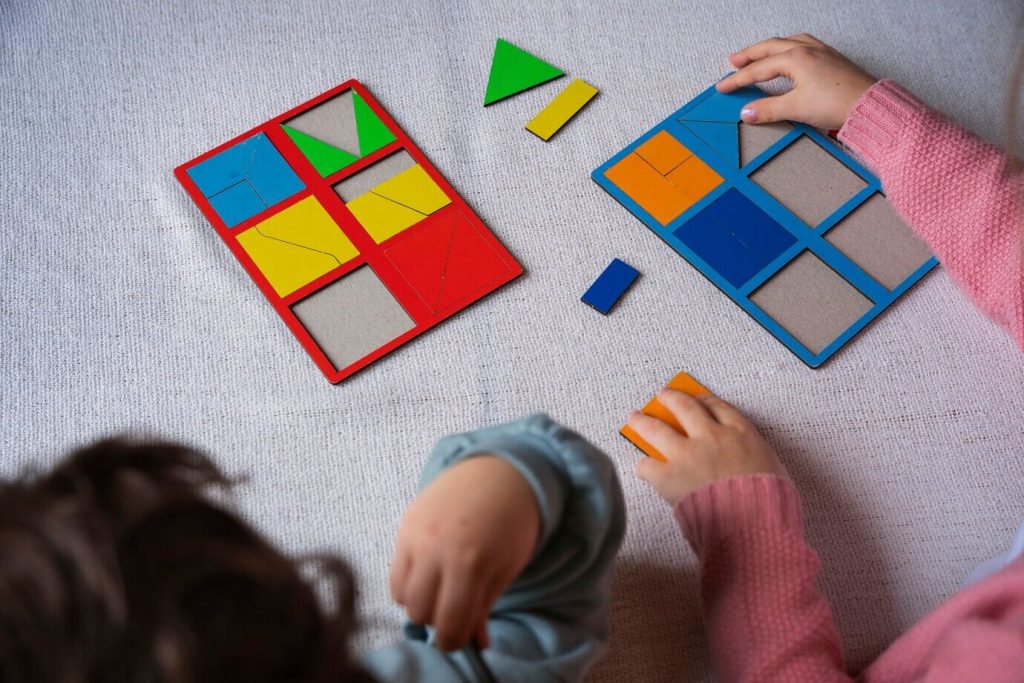
Then, they can reorganize the patterns on another surface or create their own patterns.
Building a hexagon puzzle
First, cut a hexagon shape from paper. Then, cut it further into small triangles and trapezoids. Let your kid watch you. Ask them to create a new hexagon from the pieces. It should be of the same size as the original one.
Shapes for toddlers to learn
Circles, squares, triangles, and stars are four easy shapes for toddlers to learn. If your toddler grasps these concepts easily, you can then move on to more complex shapes.
These proven ways will help you teach your toddler to understand diverse shapes.
1. Play, play, play!
It’s no secret that children adore playing with toys. They are ready to do it 24/7. But did you know some of those games can help kids learn and understand basic shapes? So, the following type your kid tries to reach out for something connected to shapes, why not use it for practice?
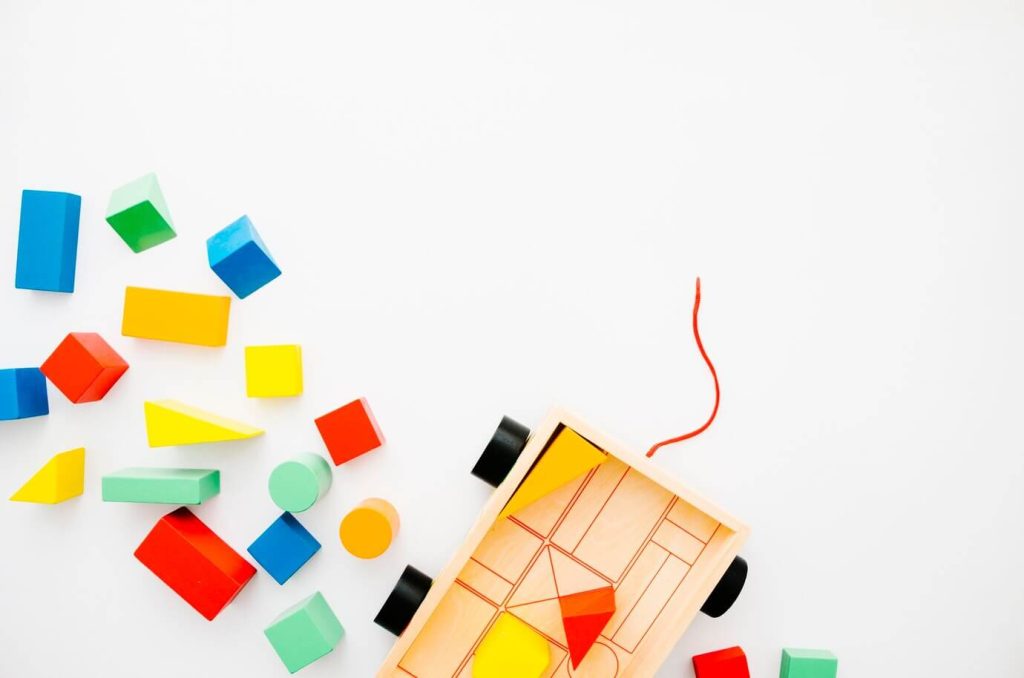
2. Keep repeating
There will come a moment when you think, “Hooray! At last, they understand shapes!” But not that fast!
Repetition is vital for kids, and its importance multiplies for toddlers. Even when it seems that you’ve already tackled different types of shapes for kids, spend an extra 5 minutes a day to repeat them. Just a little exercise will do.
3. Focus on several shapes simultaneously
Start slow when teaching basics. Remember those four easy shapes for toddlers? Start with them! After that, move to some more complex types, like triangles, rhombuses, or ovals. Ensure you remove extra toys so they won’t baffle your child and they can focus on their studies.
4. Keep checking
Before you introduce different shapes to kids, double-check that they remember what you’ve studied previously. You can ask your child a question or explain something throughout the day. For instance, you can ask to pinpoint a specific shape — easy as that. Why is it important? You should check that your kid remembers and understands the concepts so you can build on that knowledge.
What to do if they make a mistake?
If you spot that your toddler makes a mistake with the concept of basic shapes, provide them with a correct answer. If the cases persist, try to cover a specific shape once more.
5. Give them time
All kids are different. Don’t give up if you’ve defined shapes to teach toddlers but see no progress. Some kids grasp those when they are 15 months old, and others won’t be interested in the subject even when they are 20 months old. Allow your kid to follow their pace and be their best friend.
Conclusion
Teaching your kid basic shapes is both challenging and exciting.
However, with the positive approach, constant repetition, and some engaging tasks, learning shapes for kids at school won’t be an issue because they will already be acquainted with the material. And remember, sometimes they just need more time. Be patient with that.
But if you need help teaching shapes, don’t fret; Brighterly tutors are always there to assist. Book a lesson now and start learning immediately.

